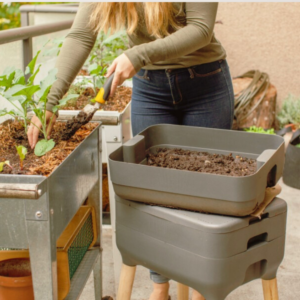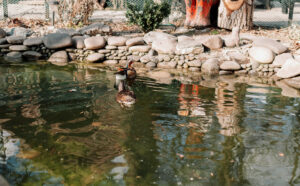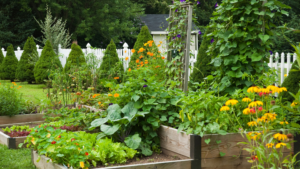
Healthy soil is the foundation of a thriving garden, and if you’re looking for a natural way to boost nutrients, improve drainage, and enrich your plants, cotton burr compost is a game-changer. Made from the outer hulls of cotton seeds, this organic compost is packed with beneficial microbes and rich in carbon, making it an excellent choice for everything from vegetable gardens to flower beds, lawns, and container plants.
Whether you’re a seasoned gardener or just starting, understanding how to use cotton burr compost can take your soil (and your plants) to the next level. This guide will cover its benefits, best applications, and where to find high-quality compost for your garden.
What is Cotton Burr Compost?
If you’ve been exploring ways to enrich your soil naturally, you might have come across cotton burr compost. But what exactly is it, and why is it such a powerhouse for gardens? Let’s dig into the details (pun fully intended).
The Origin of Cotton Burrs
Cotton burr compost starts with—no surprise here—cotton. When raw cotton is harvested and processed in a gin, the fluffy fibers are separated from the plant’s tougher outer husks, known as cotton burrs. Instead of tossing these fibrous leftovers into waste piles, they can be composted into a nutrient-rich amendment that benefits soil health in a big way.
Unlike some agricultural byproducts, cotton burrs are packed with organic matter and break down beautifully in compost, making them a sustainable choice for improving soil structure and fertility. They also help divert waste from landfills, which is a bonus for anyone aiming for a more sustainable lifestyle.
The Nutrient Content of Cotton Burr Compost
So, what makes cotton burr compost so special? It’s naturally rich in essential nutrients like:
- Nitrogen – Crucial for leafy plant growth
- Phosphorus – Supports strong root development
- Potassium – Aids in overall plant health and disease resistance
- Micronutrients – Includes calcium, magnesium, and sulfur, all of which contribute to balanced soil fertility
Beyond its nutrient profile, cotton burr compost is also slightly acidic, making it a great option for balancing alkaline soils and improving nutrient uptake in plants.
How Cotton Burrs Break Down in Compost
Cotton burrs, like any organic material, go through a microbial decomposition process when composted. Because they are fibrous and carbon-rich, they require moisture and nitrogen to break down efficiently. The composting process involves:
- Moisture retention – Cotton burrs hold moisture well, which helps keep the compost pile from drying out too quickly.
- Microbial activity – Beneficial bacteria and fungi feed on the cotton burrs, breaking them down into a form that plants can easily absorb.
- Aeration – The rough texture of the burrs naturally helps aerate compost piles, preventing compaction and promoting a well-balanced decomposition process.
The result? A fluffy, humus-rich compost that improves soil texture enhances water retention and boosts microbial life—all key factors for a thriving garden.
Cotton Burr Compost vs. Other Common Compost Materials
How does cotton burr compost stack up against other composting materials? Let’s compare:
- Compared to manure: Cotton burr compost is less likely to carry pathogens and doesn’t have the strong odor often associated with animal-based composts.
- Compared to peat moss: Peat moss is often used to improve soil structure, but it lacks the nutrient content of cotton burr compost. Plus, peat harvesting is not the most sustainable practice.
- Compared to traditional kitchen scrap compost: Kitchen waste compost is fantastic for nitrogen, but cotton burr compost brings a unique balance of nutrients and organic matter that can enhance overall soil health.
What is Cotton Burr Good For?
Cotton burr compost isn’t just a one-size-fits-all soil amendment—it’s a powerhouse that can be tailored to different gardening needs. Here’s how to make the most of it in various applications:
Vegetable Garden Usage Guidelines
For thriving veggies, mix cotton burr compost into your soil before planting to improve structure, moisture retention, and nutrient availability. Aim for a ratio of about 1–2 inches of compost worked into the top 6 inches of soil. It’s especially great for root vegetables, as it prevents compacted soil, making it easier for carrots, beets, and radishes to grow. You can also use it as a mulch around established plants to suppress weeds and moisten the soil.
Flower Bed Application Techniques
Flowers love rich, well-aerated soil, and cotton burr compost delivers just that. Before planting, blend it into your existing soil to enhance drainage and boost organic matter. For established flower beds, a 1–2-inch layer of compost on top of the soil acts as a natural mulch, feeding the plants over time while keeping weeds in check. Bonus: It helps maintain vibrant blooms by improving the soil’s ability to retain essential nutrients.
Container Gardening Recommendations
Potted plants can be a little high maintenance when it comes to soil health, but cotton burr compost makes life easier. Mix it into your potting mix at about 25–30% compost ratio to soil to improve moisture retention and aeration. It’s especially beneficial for container-grown tomatoes, herbs, and flowers, ensuring a steady supply of nutrients. Plus, it helps keep your soil from becoming compacted over time, a common struggle in container gardening.
Lawn Care Applications
If you’re after lush, healthy grass without synthetic fertilizers, cotton burr compost is your new best friend. Apply a thin layer (about ¼ inch) across your lawn in early spring or fall and rake it in lightly to let the nutrients absorb. This helps improve soil structure, enhance microbial activity, and encourage deep-root growth. Over time, it leads to thicker, more resilient grass that can withstand drought and foot traffic better.
Tree and Shrub Planting Protocols
Give your trees and shrubs a solid start by mixing cotton burr compost into the planting hole at a 50/50 ratio with native soil. This ensures the roots establish themselves in nutrient-rich, well-aerated soil. After planting, spread a 2-inch layer of compost around the base (but not directly against the trunk) to retain moisture and suppress weeds. For existing trees and shrubs, a top-dressed layer worked into the soil around the root zone keeps them nourished year after year.
How to Use Cotton Burr Compost in Your Garden
Cotton burr compost is incredibly versatile and can be applied in various ways to maximize its benefits. Here’s how to use it effectively in different garden settings.
Step-by-Step Application Guidelines for Different Garden Types
- Vegetable Gardens: Work a 2–3-inch layer into the topsoil before planting. Apply a thin layer as mulch around growing plants for ongoing benefits to retain moisture and suppress weeds.
- Flower Beds: Mix cotton burr compost into the soil before planting to improve structure and nutrient availability. A 1–2-inch top layer can also be used as a natural mulch.
- Lawn Care: Apply a light dusting (about ¼ inch) over the lawn and water it in to enhance soil health and microbial activity.
- Container Plants: Blend cotton burr compost with potting soil in a 1:3 ratio to boost water retention and nutrient content.
Common Mistakes to Avoid When Using Cotton Burr Compost
Overapplication
Cotton burr compost is packed with organic matter and nutrients, but more isn’t always better. Using excessive amounts can lead to soil that retains too much moisture, potentially causing root rot or fungal issues. Additionally, overloading the soil with organic material can create nutrient imbalances, affecting plant growth. A thin, well-mixed layer is usually sufficient—think of it as feeding your soil, not burying it!
Skipping Soil Testing
Before adding large amounts of any compost, including cotton burr compost, it’s wise to test your soil. While this compost can improve soil texture and fertility, blindly adding it without knowing your soil’s existing nutrient levels or pH can throw off the balance. A simple soil test (available at garden centers or through extension services) can help determine what your soil actually needs, ensuring the best results for your plants.
Using Non-Composted Cotton Burrs
Raw cotton burrs haven’t gone through the full decomposition process and may still contain residual agricultural chemicals from cotton farming. Proper composting breaks down these residues while also creating beneficial microbial life that supports soil health. Always choose fully composted cotton burr products from reputable sources to ensure safety and effectiveness.
Not Mixing Properly
While top-dressing with compost can be beneficial in some cases, simply layering cotton burr compost on top of the soil without incorporating it can limit its effectiveness. Mixing it into the top few inches of soil ensures that nutrients are more evenly distributed, and that soil structure improves at the root level. For containers, raised beds, or garden plots, blending compost thoroughly into the soil helps create an optimal growing environment.
Where to Buy Cotton Burr Compost?
Finding quality cotton burr compost doesn’t have to be a wild goose chase—it’s available in a variety of places, both online and in-store. Here’s where to look:
Local Garden Centers & Nurseries
Many independent garden centers and nurseries carry cotton burr compost, especially in regions where cotton is grown. These places often source high-quality compost and may have knowledgeable staff who can offer tips on using it effectively. If you don’t see it on the shelves, ask—they may be able to order it for you.
Home Improvement Stores
Big-box retailers like Home Depot, Lowe’s, and Ace Hardware sometimes stock cotton burr compost in their garden sections. Availability can vary by season and location, so calling ahead or checking their websites can save you a trip.
Farm Supply & Feed Stores
If you’re near a rural area, farm supply stores like Tractor Supply Co. or local feed stores often carry cotton burr compost. These locations tend to offer larger bags or bulk options, which can be cost-effective if you’re tackling a big project.
Online Retailers
For convenience, several online garden supply stores and marketplaces like Amazon, Walmart, and specialty compost suppliers sell cotton burr compost. This is a great option if you have trouble finding it locally but keep an eye on shipping costs—compost is heavy and can add up!
Bulk Suppliers & Landscaping Companies
Check with local bulk compost suppliers or landscaping companies if you need a large amount (think yards, not bags). Many offer delivery services, making getting what you need for big projects like lawn renovations or garden overhauls easy. No matter where you buy, look for compost free from additives, pesticides, or fillers to ensure the best quality for your soil.






